Core i7 Entry
With the i7 processors at the top of every performance comparison, many readers are interested in building a new Core i7 system. However, much of the i7 architecture is unique compared to current computer architectures, with a new socket 1366 and triple-channel DDR3 memory. That means i7 buyers will likely be buying more components than normal for the move to i7. In fact it is not unreasonable to expect a complete new system build, or at least the bulk of a complete system build, when you decide to move up to Core i7.
The question then is what is the absolute minimum you can spend and still get into a decent performing i7 system? In our System Buyers Guide: $1000 to $2000 a balanced i7 system with the cheapest Core i7 CPU managed to squeeze in at just under $2000. In the short time since that guide was published many prices have dropped, new drivers are available, and there are more options available for a Core i7 system. The goal is also a bit more modest in this Core i7 Entry system. The task was to put together a complete i7 system at near bare bones pricing.
In almost every category a lower performing and lower priced option is possible, but it makes little sense to build an i7 system and saddle it with last generation's midrange video card for example. For that reason the video choice was a Radeon 4870 1GB, which many consider the minimum for a serious gaming rig. Where the lower-priced options make just a small difference in performance we chose lower price, but where it really mattered in total system performance the better performing choice was made.
| Core i7 Entry PC | ||
| Hardware | Component | Price |
| Processor | Intel Core i7 920 Socket 1366 (2.66GHz Quad-core, 4x256KB L2, 8MB L3 Cache) |
$295 |
| Cooling | Intel Retail HSF | - |
| Video | MSI R4870-T2D1G Radeon HD 4870 1GB | $205 |
| Motherboard | GIGABYTE GA-EX58-UD3R X58 | $185 |
| Memory | Patriot Viper 3GB (3x1GB) DDR3-1333 (PC3-10666) PVT33G1333ELK - Retail | $70 |
| Hard Drive | Samsung Spinpoint F1 HD103UJ 1TB | $95 |
| Optical Drive | LG BD/HD DVD / 16x DVD+/- RW GGC-H20LK | $105 |
| Audio | On-Board Audio | - |
| Case | COOLER MASTER Centurion 534 RC-534-SKN2-GP ATX Mid-Tower | $50 |
| Power Supply | OCZ StealthXStream OCZ700SXS 700W SLI Ready CrossFire Ready | $70 |
| Display | Acer H213Hbmid 21.5" 5ms HDMI 1080P LCD - Retail | $190 |
| Speakers | Creative Inspire T6100 76W 5.1 Speakers | $70 |
| Input | Microsoft CA9-00001 Black PS/2 Keyboard and Optical USB/PS2 Mouse - OEM | $16 |
| Operating System | Microsoft Vista Home Premium OEM | $99 |
| Bottom Line | $1450 | |
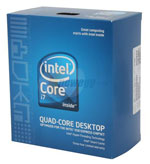 |
The i7 920 is the lowest priced Intel Core i7 you can currently buy. The other two choices are in the $600 to $1000 price range. Don't assume, however, that the 920 is not a powerful processor. The i7 920 is 30% faster in some tests than a Core 2 Quad, and then you find you can also overclock this 2.66GHz CPU to 3.6GHz to 4GHz with careful tweaking and better cooling. You will certainly be very happy with Core i7 base performance, but if you are interested in overclocking you will be even happier with this new CPU.
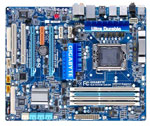 |
The Gigabyte GA-EX58-UD3R has the distinction of being the lowest priced X58 chipset motherboard you can currently buy. Others will join that sub-$200 price point soon to provide more X58 value choices. You probably also noticed that Gigabyte is trying to get as much mileage as possible from their UD3R designation, holding on to a good name as much as possible.
Since this system goal is the lowest priced Core i7 system, we stuck with the retail Intel HSF that comes with the CPU. It works fine with the Core i7 at stock speeds, even though it runs hotter than a similar Intel HSF on Core 2 chips. In the past an Intel retail HSF would be a guarantee of at least midrange overclocking, but the Core i7 runs hotter and you will not get much of an overclock with the Intel HSF. If you plan to overclock you will definitely need a third party HSF, like the Vigor Monsoon III or the Thermalright Ultra-120 eXtreme-1366.
In the Core i7 System in the $1000 to $2000 System Guide, the problems with ATI drivers on Core i7 were discussed. Since then driver releases from ATI are going in the right direction. There is also the price difference, with the capable 4870 1GB some $120 less than the now lower-priced NVIDIA GTX 280. There is also the fact that the Gigabyte GA-EX58-UD3R supports only CrossFire for multiple GPUs.
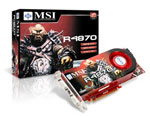 |
Put all those pieces together and the choice for GPU on the i7 Entry system is the Radeon 4870 1 GB. The best value today is the MSI R4870-T2D1G, which is just $205 after a $25 rebate. The best value in HD 4870 1GB cards shifts day-by-day, but you can generally shop for the lowest price on a 4870 1GB card and end up with a good quality card.
 |
Triple-channel memory comes in a 3GB kit (3x1GB) or a 6GB kit (3x2GB). Value dictates the 3GB choice with a great memory package from Patriot. The Viper DDR3-1333 comes as a 3GB kit won't break the bank at $70. For just $70 more, you can upgrade to a 6GB DDR3-1333 kit instead.
Good cases and power supplies are either used forever or they go with the old board on a system upgrade. Generally, it's best to invest in the best case and power supply you can afford. Since this is an Entry i7 we can cut costs on the case and PSU, and with numerous price cuts and rebates available on these components you can still get a lot of value for just a little money.
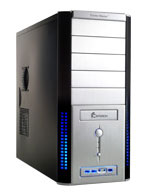 |
The Cooler Master Centurion 534 is a good value no matter how you look at it. It does come in different configurations, and the RC-534-SKN2-GP case is a good choice since it comes with three 120mm fans (front, side, and back) for cooling and installation requires no tools other than a screwdriver for mounting the motherboard. There are also plenty of drive bay options with five external 5.25" bays, one external 3.5", and four internal 3.5". Front USB/Firewire/Audio connectors are also featured. Builders report smooth edges and no sharp pieces to cut your hand during assembly. Even the expansion slots are screwless in this design. Our selection at $50 is black with a brushed aluminum and mesh front, but the case is also available in all black if you prefer at $55.
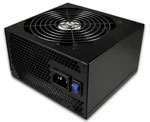 |
The power supply is an excellent value at $70. That $70 buys a 700W OCZ StealthXStream after a $20 rebate. This OCZ PSU specifies an efficiency of greater than 85% with both overload and overvoltage protection. The OCZ StealthXStream 700W should be able to handle whatever you ask of it in powering or overclocking a more basic Core i7 920 system.
 |
Hard drive capacity continues to grow, as you can see in our selection of the Samsung SpinPoint 1TB (1000GB) hard drive at just $95. For less than $100 the value is incredible. While there are differences between hard drives, outside of running benchmarks most people aren't likely to notice the difference in performance between Western Digital, Seagate, Samsung, Hitachi, and other major brands. All are worthy of consideration if the price per gigabyte (or terabyte) is right.
 |
The optical drive for an entry Core i7 system needs to play Blu-ray disks. The flexible LG GGC-H20LK has the ability to read both Blu-ray and HD-DVD format disks. It also can burn DVDs at 16x speed in single or dual-layer formats. It cannot, however, burn 25GB/50GB Blu-ray disks; adding that capability raises the cost to around $200. A BD burner like the LG 6X Blu-ray Burner GGW-H20LK is a good choice if you require a Blu-ray burner.
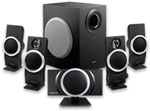 |
After reviewing the current state of onboard audio, we concluded that the onboard solutions are plenty adequate for most of today's computer users. That is why we stuck with the onboard audio on the Gigabyte. Speakers are the 5.1 Creative Inspire T6100 76W system. At $70 the T6100 delivers very good 5.1 surround sound for the price.
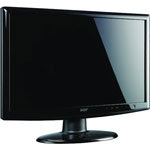 |
The LCD display resolution for the Entry Core i7 system is 1080p full HD (1920x1080). The monitor is one of the new class of 21.5" monitors with a resolution the same as last generation's 24" LCD monitors. The newest monitors use a 16:9 "true HD" ratio instead of last generation's 16:10. The resolution is the same as 24" monitors, but the price is a bargain at $190, which saves at least $100. The Acer H213Hbmid monitor is rated at 5ms and features HDMI inputs for easy hookup to the latest video cards like the MSI Radeon 4870 1GB used in this entry Core i7 system.
By paring components to the items that most affected performance, the bottom line price for a complete Core i7 is cut by more than 25% from our choices of just a few weeks ago. This reduces the price of entry for a complete i7 system to $1450 including a 1080p LCD Monitor, keyboard/mouse, 5.1 speakers, Blu-ray player, 1TB drive, Radeon 4870 1GB graphics, and Windows Vista OS. Performance of this i7 Entry system is definitely in the high-end class, although we will be extending that performance even further in our builds of the Core i7 Overclocking System, and Core i7 Dream system.










106 Comments
View All Comments
tretchie - Thursday, February 5, 2009 - link
I'll answer my own question. It does, for about $200 less than the Sony BWU300S.lanned - Thursday, February 5, 2009 - link
I realize $/gb would be shot, and that you begin to approach the price of an SSD setup especially doing a Raid 0.But while waiting for the SSD situation to stabilize and for prices to drop, I'd be content with Velociraptor drives.
Wesley Fink - Monday, February 9, 2009 - link
RAID 0, 1, or 5, or a Velociraptor Boot Raid are all good choices for the dream system depending on your needs. We mentioned that all those options were considered, but we ran up against the $5000 self-imposed cost wall.At present we lean toward a boot SSD Raid with a couple of the cheaper SATA II compatible SSD drives like the $129 G. Skill 64GB and the latest Patriot or OCZ SSD drives. However, we have seen enough issues with older SSD drives that we are not prepared to recommend a specific SSD drive at this point other than the expensive Intel SSD.
Since we are testing SSD drives you can expect more info on SSD choices at AnandTech in the near future.
greyscale - Thursday, February 5, 2009 - link
With out benchmarks, this article is a complete waste of time. I too can sit around and spec systems on Newegg. What I can't do is test them all to see what type of performance increase the extra money gets me.You owe me ten minutes.
Wesley Fink - Thursday, February 5, 2009 - link
As we point out every time we publish a Buyers Guide, we have tested and benchmarked almost all of the recommended components at AT. The Guides reflect those experiences, comparisons, and published results. Where we do not have a recommended item available in our offices we research user eperiences with that component.We also try to point out when we do not have direct experience with a particular item - like the 30" LG S-IPS panel - and why we still selected that item. You may also want to take a closer look at the evolving Bench comparison you can access by clicking Bench (under Home) at the left of the AT page. While it is still in Beta it is a direct comparison of the performance of almost every CPU you can buy in a variety of benchmarks.
greyscale - Thursday, February 5, 2009 - link
Wesley, the charts do little to no good in this case. For one, I can't even find the original i7 920 review so I have no idea what GPU, RAM and mainboard were used. I'm sure it's here, the data is so it has to be, but I can't find it. But unless the parts are the same as one of these builds it's kind of irrelevant. Individual reviews don't tell me anything about synergy.CPU charts don't tell me how an Entry, OC and Dream system will perform or what value each offers. They don't tell me how the Entry will overclock compared to the OC-centric build. There's a nearly $700 price difference, but who's to say it won't do just as well with the addition of a $50 cooler?
I know there are endless variables and results will vary but it seems like it would make sense to actually build and test recommended (suggested) configurations to give readers an idea of what kind of performance they can expect for the dollar. Price to performance ratio is where it's at, yo.
Tom's does it. Just sayin'.
C'DaleRider - Friday, February 6, 2009 - link
The original review of the 920? It's in this article: The Dark Knight: Intel's Core i7, and the URL is:http://www.anandtech.com/cpuchipsets/intel/showdoc...">http://www.anandtech.com/cpuchipsets/intel/showdoc...
Only took about 5 seconds of scanning the CPU/Chipset section to find it.........
j@cko - Thursday, February 5, 2009 - link
I was wondering, how come Anandtech did not recommend Enermax Revolution as the PSU for the Dream System? It's got the highest rating among its class everywhere. Thanks.greyscale - Thursday, February 5, 2009 - link
Jacko: the Corsair is cheaper and better. Deal with it.j@cko - Thursday, February 5, 2009 - link
Uh... Cheaper? Yes. Better? Anandtech says otherwise. Check your facts b4 making yourself look like a fool.